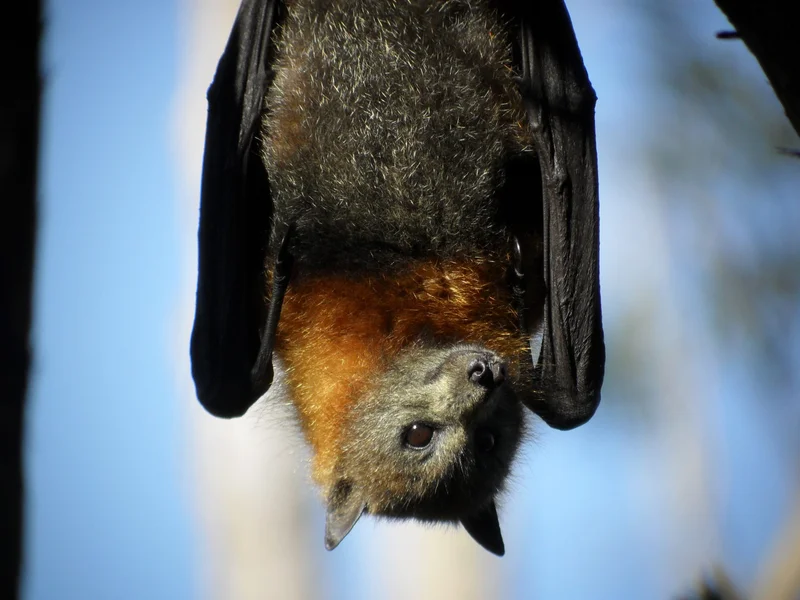Re-think bats this Halloween

Bats (or flying-foxes) get a bad rap and it’s partly due to the stories of Vampires and Dracula who would suck your blood then turn into a bat and disappear into the night.
With their leathery wings, flying around at night and hanging upside down in dark, spooky places it’s easy to see why people are a bit scared.
But the truth is flying-foxes are one of the most important mammals in the environment, responsible for pollinating vegetation, dispersing seeds across large distances and helping in pest control.
Just the Bat Facts
- Some trees, like Australian Eucalypts, only flower at night and depend on flying-foxes for survival to pollinate their flowers and spread their seeds. So without flying-foxes, there would be no food or habitat for koalas.
- There are over 1100 species of bats in the world. Of those 77 call Australia home. South East Queensland is lucky enough to have 31 different species of bats living here.
- The smallest bat in the world is the Bumble Bee Bat which lives in Thailand and weighs only 2 grams.
- The largest bat in the world is the Giant Flying Fox which lives in India and has a wingspan of 1.8 metres.
- Bats cannot stand on their hind legs, they can only hang by their feet and by their thumbs.
- Why do bats hang upside down? If bats had big enough muscles to hold their body ‘right way up’ they would be too heavy to fly. Therefore, they hang upside-down so they are light enough to fly.
- Bats are the only mammals capable of true flight
- Around 20% of all mammals are bats
- Worldwide, over 500 species of flowers in at least 67 plant families rely on bats as their major or exclusive pollinators.
- Microbats are small bats with a wingspan of about 25cm and use echolocation (sonar) to feed on insects such as mosquitos.
- Megabats, or flying foxes as they are usually called, are the largest of bats with a wingspan of up to 1.8 metre. They feed on fruit, blossoms and nectar.
- There are 3 kinds of flying foxes that frequent the Sunshine Coast--The black, the grey headed and the little red flying fox. The Little Red Flying Fox is the smallest of the species found in South-east Queensland. Adults weigh a tiny 300-600 gram.
- Mary Cairncross Scenic Reserve has 17 species of bats. Have a family day out and see how many you can spot!
- From September to November, female flying-foxes on the Sunshine Coast will give birth to one live pup. From December to February,the mothers stay at the same roost site to raise their young. During this time there will be a lot more bats in the area.
- Once the baby is 6 weeks old Mum leaves the baby in a ‘creche’ to go hunting for food at night. When she returns she follows the sound to her baby and, like all babies, they will cry very loudly for their mum.
- Sunshine Coast Council have a dedicated plan and team to help look after our local Flying Foxes.
How to help an injured bat
Bats can and do get injured. If you ever see a bat hanging low in a tree during the day, on the ground or caught in fencing or power lines call 1300 ANIMAL (264 625) and a bat specialist will come and help.
Never handle a bat, even if you want to help it. It’s best to call for the experts so you, and the bat, don’t get hurt.
If you have fruit trees in your garden, cover the fruit in paper bags instead of nets that flying foxes can get caught in.
If you do need to net your tree check out the Queensland Department of Environment and Science website to learn how to do it so wildlife don’t get hurt.
If a microbat happens to fly in your house it’s usually just followed insects inside and become confused by all the obstacles in the room. In most cases, the “lost” bat will try to locate an exit and leave on its own.
You can help by opening windows and exterior doors, and closing any doors to adjacent rooms.
Turn off the lights and ceiling fans. Remain quiet and patient and it will find its way out again.
Last edited on:
First published on: